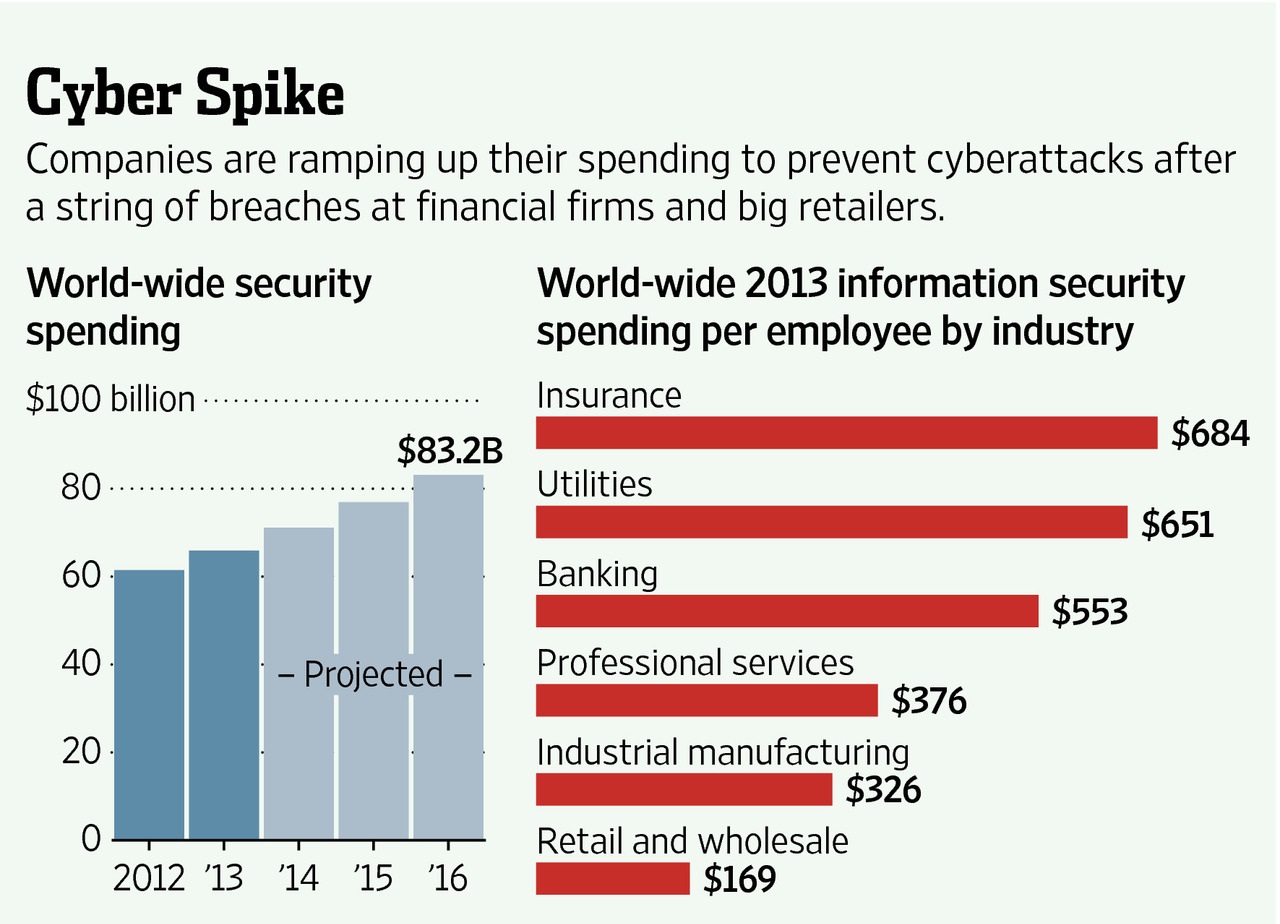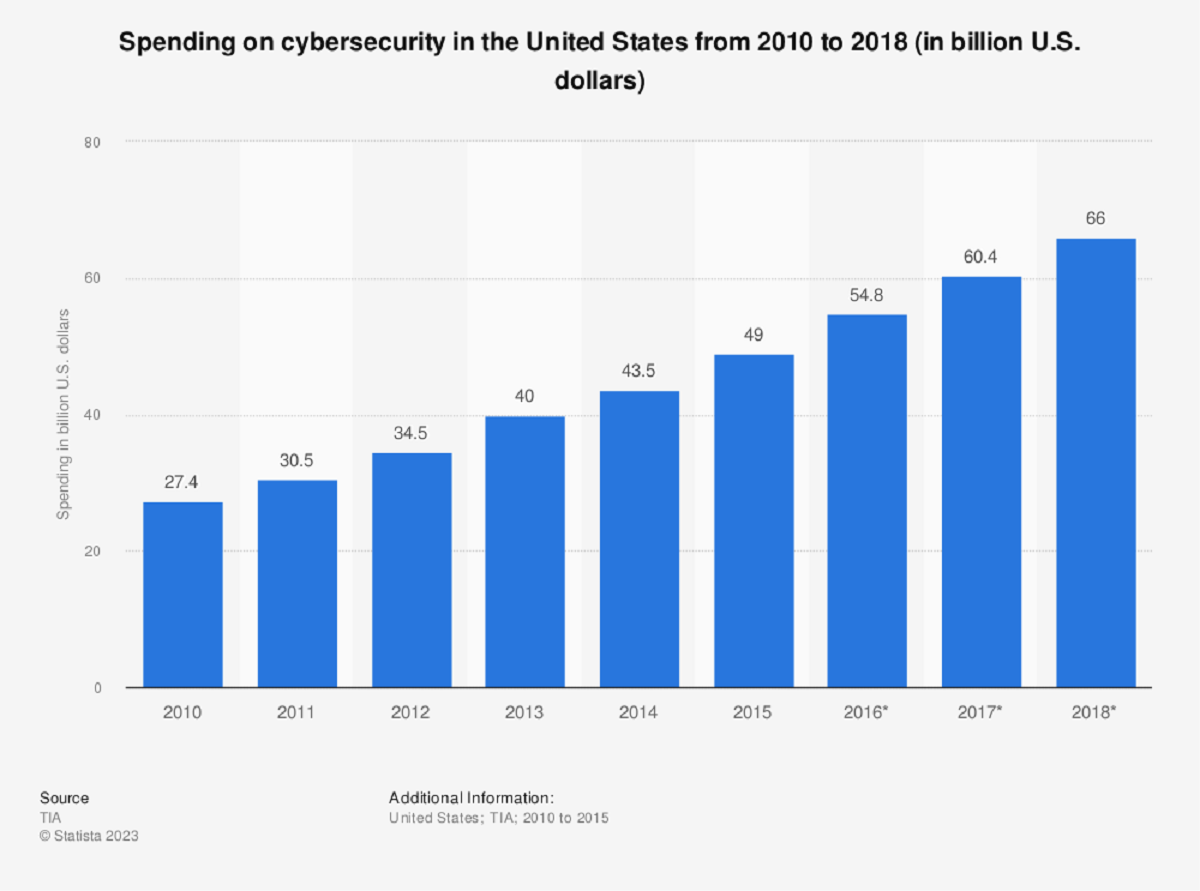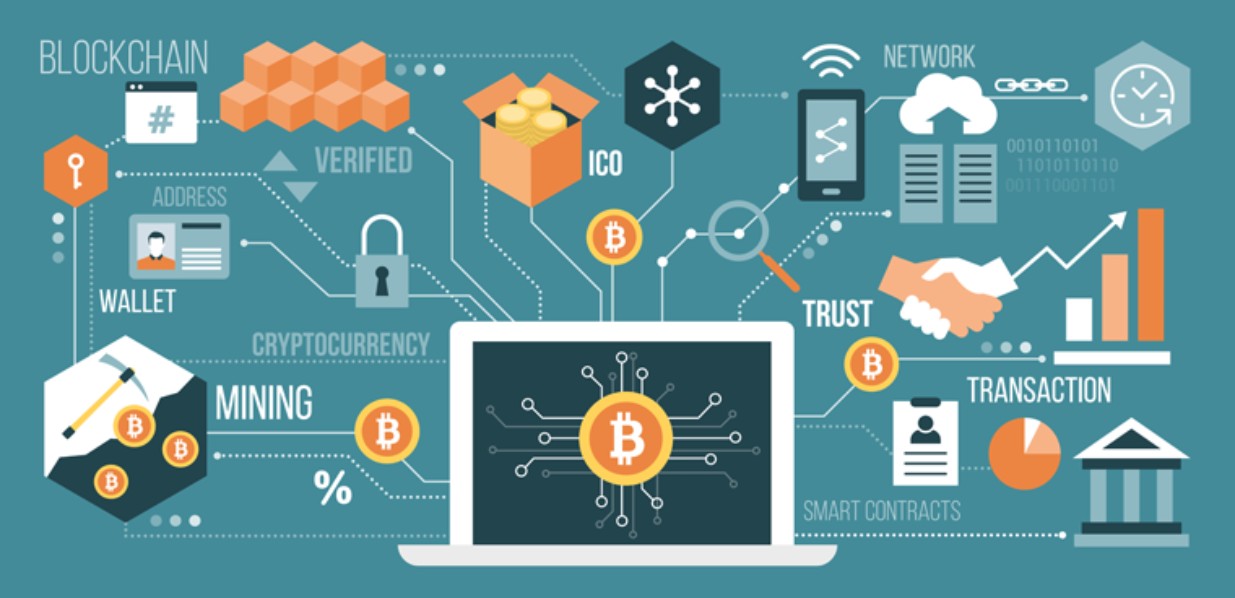Introduction
Cybersecurity has become a critical concern for the banking industry in today’s digital age. With the increasing reliance on technology and the growth of online banking, financial institutions are faced with the constant threat of cyberattacks. As a result, banks are allocating significant resources to protect their systems, customer data, and financial assets from malicious activities.
The financial sector is an enticing target for cybercriminals due to the potential for financial gain and the vast amount of sensitive information stored within banking systems. Attacks can range from data breaches and identity theft to ransomware and fraudulent transactions. These cybersecurity threats not only pose financial risks to banks but can also damage their reputation and erode customer trust.
Recognizing the gravity of the situation, banks are prioritizing cybersecurity and investing substantial amounts to safeguard their operations. Bolstering their defenses against evolving threats and staying ahead of cybercriminals has become an ongoing mission for financial institutions.
However, determining the precise amount that banks spend on cybersecurity is challenging due to the lack of transparency in reporting these figures. While banks may not disclose exact expenditure numbers, various industry reports and estimates provide some insight into the magnitude of these investments.
This article explores the importance of cybersecurity in the banking industry, examines the factors influencing banks’ cybersecurity expenditure, highlights key investments made by banks, and discusses strategies to enhance cybersecurity. Furthermore, it delves into the challenges faced by banks in maintaining effective cybersecurity measures and the regulatory frameworks and compliance requirements they must adhere to. Additionally, it examines industry initiatives aimed at promoting collaboration and information sharing among financial institutions.
Through the analysis of case studies, this article also sheds light on the cybersecurity budgets of banks, providing a glimpse into the financial commitment required to safeguard their digital infrastructure and customer data. By understanding the significance of cybersecurity and the resources dedicated to it, we can better appreciate the efforts made by banks to protect their operations and customers from cyber threats.
The Importance of Cybersecurity in Banking
Cybersecurity is paramount in the banking industry due to the immense financial risks associated with cyber threats. Banks store large volumes of sensitive customer information, including personal and financial data, making them attractive targets for hackers. A successful cyberattack can lead to severe consequences, including financial loss, reputational damage, and legal ramifications.
Protecting customer data is crucial not only for maintaining trust but also for complying with regulatory requirements. Banks are obligated to safeguard customer information and adhere to data protection laws. Any data breach or failure to protect customer data can result in hefty fines and loss of business.
Furthermore, cyberattacks can disrupt banking operations, leading to significant financial and operational consequences. Persistent downtime can prevent customers from accessing their accounts, conducting transactions, and seeking the services they need. This can result in customer dissatisfaction, loss of business, and damage to the bank’s reputation.
Additionally, the financial system as a whole relies on the trust and integrity of the banking sector. A cybersecurity breach targeting multiple banks or critical infrastructure can have devastating implications for the stability of the entire financial ecosystem. Ensuring robust cybersecurity measures is necessary to protect the interconnectedness of the financial sector and prevent widespread financial disruptions.
Banks also face the threat of financial fraud through cyberattacks. Malicious actors can exploit vulnerabilities in banking systems to conduct fraudulent transactions, leading to significant financial losses for both the institutions and their customers.
Moreover, the rise of digital banking platforms and mobile banking apps has expanded the attack surface for cybercriminals. With the increasing use of technology and the Internet of Things (IoT), banks are exposed to a wider range of vulnerabilities. It is essential for banks to secure their digital channels to prevent unauthorized access and ensure the integrity and confidentiality of customer data.
By prioritizing cybersecurity, banks can confidently provide their customers with secure and reliable digital services. Customers need reassurance that their financial transactions and personal information are protected against cyber threats. Investing in robust cybersecurity measures not only safeguards customer trust but also differentiates banks in the competitive financial industry.
Overall, the importance of cybersecurity in banking cannot be overstated. It is a fundamental aspect of ensuring the trust, stability, and integrity of the financial system. Banks must continuously adapt and invest in cutting-edge technologies and practices to defend against evolving cyber threats and safeguard their operations and customers.
Factors Affecting Banks’ Cybersecurity Expenditure
Several factors impact the amount of money banks allocate to cybersecurity. These factors vary based on the size of the bank, its risk profile, regulatory requirements, and the evolving threat landscape. Understanding these factors is crucial for banks to make informed decisions about their cybersecurity investments.
1. Size and Complexity of the Bank:
Large multinational banks with extensive operations and a wide customer base have more complex systems and a higher risk of cyberattacks. Consequently, they tend to allocate larger budgets to cybersecurity. Smaller banks may have simpler systems but still face cybersecurity risks and need to allocate a proportional budget to protect their operations.
2. Regulatory Requirements and Compliance:
Banks are subject to various regulatory frameworks that mandate specific cybersecurity measures. Compliance with these regulations often requires significant investments in technology, personnel training, and security controls. Failure to comply can result in substantial penalties, making cybersecurity an essential priority for banks.
3. Risk Assessment and Industry Threat Landscape:
Banks conduct risk assessments to identify potential threats and vulnerabilities specific to their operations. The threat landscape constantly evolves, with new attack vectors and techniques emerging regularly. Banks must invest in technologies and capabilities to adapt and mitigate these changing threats.
4. Customer Expectations and Trust:
Customers place significant importance on the security of their financial information. Banks must invest in robust cybersecurity measures to meet customer expectations and maintain trust. Failure to do so can lead to customer attrition and damage to the bank’s reputation.
5. Cost of Cybersecurity Solutions:
Cybersecurity technologies and services can be expensive, especially for advanced solutions that provide comprehensive protection. Banks must consider the cost-benefit of investing in cybersecurity solutions and choose those that align with their risk appetite and budgetary constraints.
6. Cyber Insurance:
Some banks purchase cyber insurance as part of their risk management strategy. The cost of insurance premiums may influence the amount of money allocated to cybersecurity. Banks that have comprehensive cyber insurance coverage may allocate a smaller budget for cybersecurity, relying on insurance as a financial safety net.
7. Outsourcing and Partnerships:
Outsourcing certain cybersecurity functions to third-party providers is a common practice among banks. This can impact the overall cybersecurity expenditure, as costs for outsourcing may vary. Banks must carefully evaluate the costs and benefits of outsourcing and ensure the chosen partners have the necessary expertise and meet regulatory requirements.
By considering these various factors, banks can determine the appropriate amount of resources to allocate to cybersecurity. Recognizing the unique challenges and risks faced by their institution enables banks to make informed decisions and implement effective cybersecurity measures to protect their systems, data, and customers.
Key Cybersecurity Investments in the Banking Industry
The banking industry continuously invests in various cybersecurity measures to protect sensitive information, secure systems, and mitigate risks. These investments span across technology, personnel, and processes to ensure robust security measures are in place.
1. Advanced Threat Detection and Prevention:
Banks employ sophisticated cybersecurity solutions to detect and prevent advanced threats. This includes implementing intrusion detection and prevention systems (IDPS), deploying firewalls, and utilizing behavior analytics to identify suspicious activities and potential breaches.
2. Data Encryption and Secure Communication:
Protecting customer data is a top priority for banks. Secure encryption techniques are used to safeguard sensitive information during transmission and storage. Encryption protocols such as SSL/TLS are utilized to secure online transactions and data exchange between customers and the bank’s systems.
3. Multi-factor Authentication:
To enhance security and reduce the risk of unauthorized access, banks implement multi-factor authentication (MFA) methods. This includes the use of one-time passwords (OTP), biometric identification, and token-based authentication, ensuring that only authorized individuals can access sensitive systems and data.
4. Security Operations Center (SOC):
Banks invest in establishing dedicated Security Operations Centers (SOC) to monitor and respond to security incidents in real-time. These centers utilize advanced security information and event management (SIEM) systems, enabling proactive threat detection, incident response, and continuous monitoring of the bank’s network and systems.
5. Employee Training and Awareness:
A strong cybersecurity culture begins with educated and vigilant employees. Banks invest in cybersecurity training programs to raise awareness and educate staff about potential risks, best practices, and the importance of adhering to security protocols. Regular training sessions and simulated phishing exercises help employees recognize and report potential security threats.
6. Incident Response and Business Continuity Planning:
Banks have well-defined incident response plans and business continuity strategies in place to ensure quick response and recovery in the event of a cybersecurity incident or system disruption. Investments are made in building incident response teams, performing regular drills, and maintaining redundant systems to minimize downtime and to quickly resume normal operations.
7. Vulnerability Assessments and Penetration Testing:
To identify and remediate potential weaknesses in their systems, banks regularly conduct vulnerability assessments and penetration testing. These assessments help identify vulnerabilities that could be exploited by cybercriminals, allowing banks to address these weaknesses and enhance their security posture.
8. Collaboration and Information Sharing:
Banks invest in collaborative efforts to share threat intelligence and cyber threat indicators with industry peers, governments, and cybersecurity organizations. This collective approach helps identify emerging threats and provides a broader defense against cyberattacks.
By making these key investments in cybersecurity, banks demonstrate their commitment to protecting customer data, securing their systems, and maintaining trust. The evolving threat landscape necessitates continuous investment and adaptation to stay ahead of cybercriminals and provide a safe environment for banking operations.
Strategies to Enhance Banks’ Cybersecurity
Enhancing cybersecurity in the banking industry requires a multifaceted approach that encompasses technology, processes, and people. Banks employ various strategies to strengthen their defenses and mitigate cyber risks.
1. Risk-Based Approach:
Banks adopt a risk-based approach to cybersecurity, focusing their efforts on areas with the highest vulnerabilities and potential impact. Conducting thorough risk assessments allows banks to prioritize their investments and allocate resources where they are most needed.
2. Regular Security Audits:
Banks conduct regular security audits to assess the effectiveness of their security controls and identify potential gaps or vulnerabilities. These audits help ensure compliance with regulatory requirements and provide valuable insights for improving cybersecurity measures.
3. Continuous Monitoring and Threat Intelligence:
Banks implement advanced monitoring systems that continuously monitor their networks for suspicious activities and potential threats. Leveraging threat intelligence feeds, banks can stay updated on the latest attack vectors and proactively respond to emerging threats.
4. Robust Incident Response Plans:
Having well-defined incident response plans is crucial for banks to quickly and effectively respond to cybersecurity incidents. These plans outline procedures for containing, investigating, and recovering from security breaches, minimizing the potential impact on operations and customer data.
5. Regular Employee Training:
Investing in ongoing cybersecurity training and awareness programs for employees is vital. Banks educate their staff about phishing attacks, social engineering tactics, and other common cybersecurity risks. By fostering a cybersecurity-aware culture, employees become the first line of defense against cyber threats.
6. Strong Access Controls:
Banks implement robust access controls to ensure that only authorized individuals can access sensitive systems and data. This includes implementing role-based access controls (RBAC), least privilege principles, and multi-factor authentication (MFA) to prevent unauthorized access and minimize the risk of insider threats.
7. Data Loss Prevention (DLP):
Banks deploy data loss prevention technologies to identify, monitor, and prevent the unauthorized exfiltration of sensitive data. DLP solutions can detect and block attempts to transfer confidential information outside the bank’s network, protecting against data breaches and insider threats.
8. Encryption and Secure Communication:
Banks implement strong encryption protocols to protect data both in transit and at rest. Implementing Transport Layer Security (TLS) and adopting encryption algorithms ensures data confidentiality and integrity during online transactions and communication.
9. Vendor Risk Management:
Banks evaluate and manage the cybersecurity risks associated with their third-party vendors. Implementing vendor risk management programs ensures that vendors adhere to strict security requirements and align with the bank’s cybersecurity standards.
10. Collaboration and Information Sharing:
Banks actively participate in industry forums, sharing threat intelligence and best practices. Collaborating with peers, government agencies, and cybersecurity organizations enhances the collective defense against cyber threats and promotes a more secure banking ecosystem.
By implementing these strategies, banks can significantly enhance their cybersecurity posture. However, it is important to note that cybersecurity is an ongoing process that requires constant adaptation and investment in order to stay ahead of evolving threats.
Challenges Faced by Banks in Maintaining Cybersecurity
Maintaining robust cybersecurity in the banking industry is a constant challenge due to the evolving nature of cyber threats and the complexities of digital banking operations. Banks face several challenges in their efforts to ensure the security of their systems, data, and customer information.
1. Sophisticated Cyber Threats:
One of the primary challenges faced by banks is the ever-evolving sophistication of cyber threats. Cybercriminals employ advanced techniques, such as phishing, ransomware, and social engineering, to bypass security measures and gain unauthorized access to sensitive information. Banks must continually adapt their security measures to keep pace with these evolving threats.
2. Insider Threats:
Banks face risks from insider threats, which include employees, contractors, or third-party vendors with authorized access to sensitive systems and data. Insider threats can be intentional, where malicious individuals exploit their privileges, or unintentional, through human error or negligence. Banks must implement stringent access controls, monitoring processes, and employee training to mitigate the risk of insider threats.
3. Compliance with Stringent Regulations:
Banks operate in a highly regulated environment and must adhere to stringent cybersecurity regulations. Compliance with regulations such as the General Data Protection Regulation (GDPR), Payment Card Industry Data Security Standard (PCI DSS), and others can be challenging due to the complexity of requirements and the need for ongoing monitoring and reporting. Ensuring compliance adds an additional layer of complexity to banks’ cybersecurity efforts.
4. Legacy Systems and Technology:
Many banks operate using legacy systems that may have inherent security vulnerabilities due to outdated software or lack of vendor support. Retrofitting security controls onto these systems can be challenging and costly. Banks must strike a balance between upgrading their systems and implementing compensatory security measures to secure legacy infrastructure.
5. Changing Technology Landscape:
The rapid advancement of technology, such as cloud computing, mobile banking apps, and IoT devices, has expanded the attack surface for cybercriminals. Banks must continuously evaluate and secure emerging technologies to prevent new vulnerabilities from being exploited. The rate at which technology evolves requires banks to be proactive in their cybersecurity efforts.
6. Shortage of Skilled Cybersecurity Professionals:
There is a global shortage of skilled cybersecurity professionals, making it challenging for banks to recruit and retain talent. Building and maintaining a competent cybersecurity team can be demanding and resource-intensive. Banks must invest in training, certifications, and competitive compensation packages to attract and retain top cybersecurity talent.
7. Rapid Response to Cyber Threats:
Cyberattacks can occur at any time, and banks must be prepared to respond swiftly and effectively. Detecting, containing, and mitigating the impact of a cyber incident requires rapid response and coordination across various internal departments and external partners. Time-sensitive decision-making and incident response management can be challenging, especially during high-stress situations.
8. Balancing Security and User Experience:
While banks prioritize security, they must also balance it with a seamless user experience. Customers expect convenient, user-friendly online banking services, but implementing stringent security measures can sometimes introduce friction that hinders the user experience. Banks must find the right balance between implementing robust security controls and providing a frictionless customer experience.
Despite these challenges, banks must remain committed to maintaining a strong cybersecurity posture. By addressing these challenges through proactive measures, continuous investment, and collaboration within the industry, banks can mitigate risks and ensure the security and trustworthiness of their digital banking operations.
Regulatory Frameworks and Compliance Requirements for Banks
The banking industry operates within a heavily regulated landscape when it comes to cybersecurity. Governments and regulatory bodies worldwide have established frameworks and implemented compliance requirements to ensure the security and integrity of financial systems and protect customer information. Compliance with these regulations is crucial for banks to maintain trust, avoid penalties, and mitigate the risk of cyber threats.
1. General Data Protection Regulation (GDPR):
Implemented by the European Union (EU), GDPR sets high standards for the protection of personal data. Banks that process personal information of EU residents are required to comply with GDPR, adopting measures such as data encryption, data minimization, and the ability to notify authorities and affected individuals in the event of a data breach.
2. Payment Card Industry Data Security Standard (PCI DSS):
PCI DSS is a global standard established by major payment card companies to protect cardholder data. Banks that handle payment card information must comply with PCI DSS requirements, which include maintaining secure networks, regularly monitoring and testing systems, and implementing strong access controls to protect cardholder data.
3. Basel Committee on Banking Supervision (BCBS) Guidelines:
The BCBS provides guidelines for banks to maintain sound cybersecurity practices and manage the associated risks. These guidelines focus on the governance of cybersecurity, risk management, and the establishment of robust security controls to protect critical banking infrastructure.
4. National and Regional Regulations:
Each country may have its own set of regulations and requirements for banks in terms of cybersecurity. For example, in the United States, banks must comply with the Gramm-Leach-Bliley Act (GLBA), which mandates safeguards to protect customer financial information. Similarly, other countries have specific legislation and regulatory frameworks to ensure cybersecurity in the banking sector.
5. Industry Standards and Best Practices:
Beyond regulatory requirements, banks often adhere to industry standards and best practices to enhance their cybersecurity posture. These include standards such as ISO 27001 (Information Security Management System), NIST Cybersecurity Framework, and the Center for Internet Security (CIS) Controls. Following these standards provides a framework for implementing comprehensive security controls and risk management practices.
Compliance with these regulatory frameworks and requirements involves several key aspects:
– Security Governance: Banks must establish clear policies, procedures, and governance structures to oversee their cybersecurity initiatives. This includes assigning responsibility for cybersecurity, conducting regular risk assessments, and establishing processes for monitoring and reporting security incidents.
– Risk Management: Banks are required to assess their cybersecurity risks and implement appropriate controls to mitigate these risks. This includes identifying vulnerabilities, conducting regular penetration testing and vulnerability assessments, and implementing incident response plans to address potential breaches.
– Data Protection and Privacy: Protecting customer data is a critical component of regulatory compliance. Banks must establish measures to secure customer information, including encryption of sensitive data, implementing access controls, and ensuring data privacy rights are upheld.
– Reporting and Audit: Compliance requires regular reporting and auditing of the bank’s cybersecurity practices. Banks must maintain records and provide evidence of their compliance efforts, including undergoing external audits and assessments to validate adherence to regulatory requirements.
Non-compliance with regulatory frameworks can result in significant penalties, loss of customer trust, and reputational damage for banks. Consequently, banks must establish robust cybersecurity programs, allocate appropriate resources, and continuously monitor and enhance their security measures to ensure compliance with these regulations and protect the interests of their customers and stakeholders.
Industry Initiatives to Enhance Collaboration and Information Sharing
In the face of increasing cyber threats, the banking industry recognizes the importance of collaboration and information sharing to collectively combat cybercrime. Several industry initiatives have been launched to promote collaboration, facilitate the exchange of threat intelligence, and enhance the overall cybersecurity posture of banks.
1. Financial Services Information Sharing and Analysis Centers (FS-ISAC):
FS-ISAC is a global industry forum that enables financial institutions to share cyber threat intelligence, best practices, and mitigation strategies. It serves as a central hub for timely information exchange and fosters collaboration among member institutions, government agencies, and cybersecurity vendors.
2. Cyber Threat Intelligence Sharing Frameworks:
Various industry-led initiatives and frameworks have been established to facilitate cyber threat intelligence sharing. These include the Structured Threat Information Expression (STIX) and the Trusted Automated Exchange of Indicator Information (TAXII) protocols. These frameworks provide structured formats for sharing threat intelligence and enable automated data exchange between participating organizations.
3. Cross-Sector Collaborations:
Banks collaborate with other sectors, such as government agencies, law enforcement, and cybersecurity organizations, to improve overall cyber resilience. Joint initiatives aim to align efforts, share intelligence across different industries, and coordinate response activities to cyber threats that may have cross-sector impacts.
4. Vendor Collaboration:
Banks collaborate with cybersecurity vendors and technology providers to share information, improve security products, and stay updated on emerging threats. Banks often engage in active partnerships with vendors to exchange threat intelligence and collaborate on developing innovative security solutions to address evolving cyber risks.
5. Threat Intelligence Sharing Platforms:
Several platforms and forums have emerged, both public and private, to facilitate the sharing of threat intelligence among banks. These platforms allow banks to exchange real-time information about cyber threats, indicators of compromise, and best practices. They promote collaborative defense mechanisms and enable quicker response to emerging threats.
6. Regulatory and Government Initiatives:
Regulatory bodies and government agencies play a vital role in fostering collaboration and information sharing among banks. They encourage the implementation of industry-wide standards and regulations that promote cybersecurity, facilitate sharing of threat intelligence, and establish guidelines for incident response and reporting.
7. Cybersecurity Education and Training:
Industry initiatives focus on cybersecurity education and training programs to enhance the skills and knowledge of banking professionals. These programs offer workshops, seminars, and certifications to foster collaboration and strengthen the cybersecurity workforce.
8. Cybersecurity Information Exchanges:
Cybersecurity information exchanges serve as platforms where banks and other financial institutions can securely share information about cyber threats. These exchanges allow organizations to share details of incidents, vulnerabilities, and threat intelligence in a confidential and trusted environment.
By embracing these collaborative initiatives and sharing vital information, banks strengthen their collective defenses against cyber threats. The power of shared intelligence and coordinated action enables faster detection and response, enhances overall threat awareness, and ultimately helps protect the financial industry as a whole.
Case Studies: Banks’ Cybersecurity Budgets
Examining case studies of banks’ cybersecurity budgets provides valuable insights into the financial commitment required to protect digital infrastructure and customer data. While exact figures may not always be publicly disclosed, these examples shed light on the significant investments made by banks to safeguard their operations from cyber threats.
1. JPMorgan Chase & Co.:
JPMorgan Chase, one of the largest banks globally, allocates a significant portion of its budget to cybersecurity. In 2020, the bank announced a cybersecurity budget of $700 million, reflecting its commitment to protecting customer data and infrastructure. The investment is directed towards advanced threat detection technologies, security analytics, and enhancing the bank’s cybersecurity workforce.
2. Citigroup Inc.:
Citigroup, another major global bank, places cybersecurity as a top priority. The bank has demonstrated its commitment to cybersecurity through substantial financial investments. Although specific budgetary figures are not publicly disclosed, Citigroup’s annual report highlights its continuous investments in cybersecurity capabilities, including advanced security tools, enhanced threat monitoring systems, and comprehensive employee training programs.
3. Wells Fargo & Company:
Wells Fargo has consistently emphasized the importance of cybersecurity and protecting customer information. The bank recognizes the evolving threat landscape and invests significant resources to maintain a robust cybersecurity posture. While the exact budget figures are not disclosed, Wells Fargo has indicated that it continues to allocate substantial funds to cybersecurity initiatives, including investments in advanced security technologies, employee training, and strengthening its security operations center.
4. HSBC Holdings:
HSBC, a global banking and financial services organization, recognizes the critical role cybersecurity plays in maintaining trust and protecting sensitive information. The bank has a dedicated cybersecurity budget and invests heavily in technological advancements and security measures. While specific budget details may not be publicly available, HSBC’s commitment to robust cybersecurity is evident through its emphasis on implementing cutting-edge technologies, enhancing threat intelligence capabilities, and collaborating with industry partners to share best practices.
These case studies highlight the substantial cybersecurity budgets allocated by major banks to address the complex and evolving threat landscape. They underscore the recognition that investments in cybersecurity are imperative for protecting customer data, ensuring operational resilience, and maintaining trust in the digital banking environment.
It is important to note that cybersecurity budget allocations may vary among banks, depending on factors such as their size, risk profile, regulatory requirements, and technological infrastructure. Banks continuously assess the evolving threat landscape and invest accordingly to address emerging risks and maintain robust cybersecurity defenses.
Conclusion
Cybersecurity is a top priority for banks in today’s digital landscape. The banking industry acknowledges the critical need to protect sensitive customer data, secure digital infrastructure, and mitigate cyber threats. To achieve these goals, banks allocate substantial resources to cybersecurity measures, including investments in advanced technologies, employee training, and collaboration initiatives.
The importance of cybersecurity in the banking industry cannot be overstated. Banks face numerous challenges, including sophisticated cyber threats, compliance with stringent regulations, and the need to balance security with seamless user experiences. However, by adopting strategies such as risk-based approaches, regular security audits, and continuous monitoring, banks can enhance their cybersecurity defenses.
Industry initiatives, such as information sharing platforms, collaborative frameworks, and vendor partnerships, enable banks to collectively combat cyber threats. Through these initiatives, banks exchange threat intelligence, share best practices, and improve collective defenses, bolstering the overall cybersecurity posture of the industry.
Case studies of banks’ cybersecurity budgets highlight the substantial financial investments made by institutions globally. Whether publicly disclosed or not, these budgets reflect the commitment of banks to protect customer data and infrastructure from cyber threats. Major banks allocate significant resources to advanced threat detection, data encryption, employee training, incident response planning, and collaboration with cybersecurity vendors.
In conclusion, the banking industry must remain vigilant and proactive in the face of ever-evolving cyber threats. Continuous investments in cybersecurity, collaboration across industry stakeholders, and compliance with regulatory frameworks are essential to protect customer trust, ensure operational resilience, and maintain the integrity of the financial system. By prioritizing cybersecurity and leveraging the latest technologies and best practices, banks can successfully navigate the cyber landscape and provide secure digital services to their customers in an increasingly interconnected world.

























